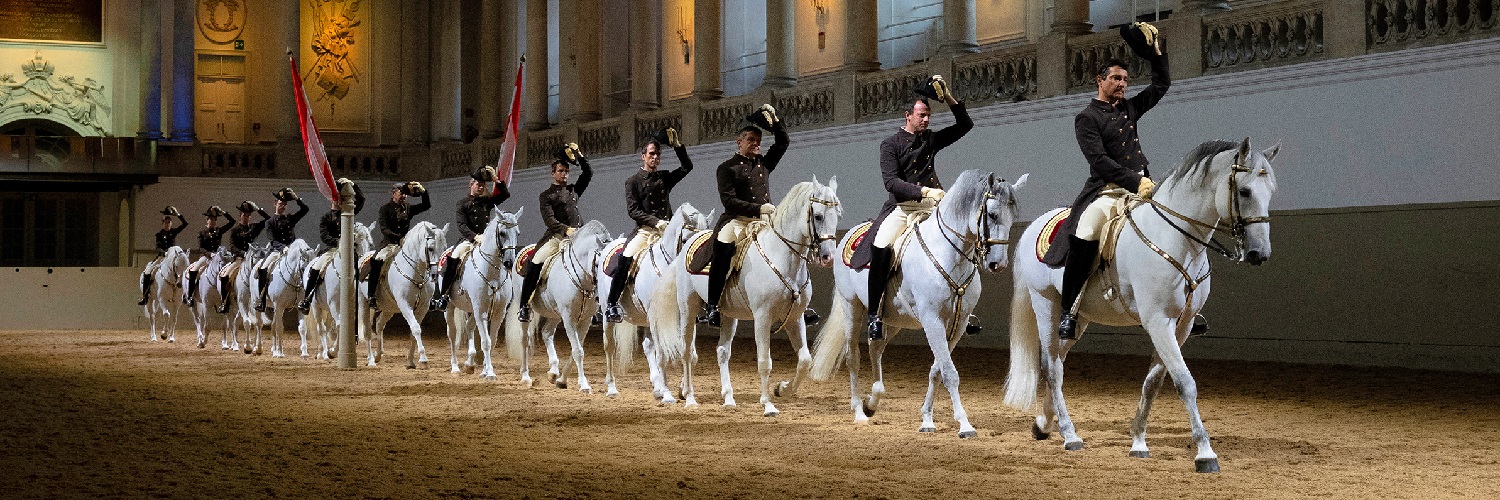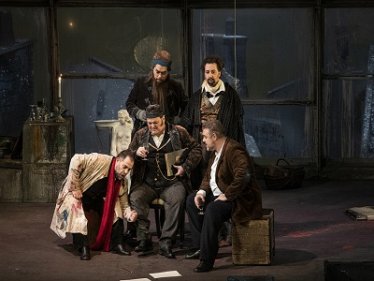La bohème - Schedule, Program & Tickets
La bohème
Date:
Time:
Price class:
Location:
31.12.2024 , Tuesday
17:00
B
Deutsche Oper, Bismarckstraße 35, 10627 Berlin, Germany
Opera in four scenes
Scenes from Henri Murger's "Scènes de la vie de bohème"
Libretto by Luigi Illica and Giuseppe Giacosa
First performance on February 1, 1896 in Turin
Premiered at the Deutsche Oper Berlin on December 25, 1988
recommended from 12 years
2 hours 30 minutes / One break
In Italian with German and English surtitles
Introduction: 45 minutes before the start of the performance in the foyer on the right
Puccini had already shown himself to be a brilliant musical colorist with EDGAR [1889] and MANON LESCAUT, but it was only with LA BOHÈME that agreement between the material and its musical design was achieved that Claude Debussy raved about: “I don’t know anyone who does the Paris described that time as well as Puccini did in LA BOHÈME«. Puccini's impressionistic sound technique combines subjective feeling with objective tone painting. Tonal painting elements, musical descriptions of the ambience, effective musical local color spread their magic from the 1st scene on, when Rodolfo and Marcello burn the drama manuscript or when the poet wets the face of the unconscious Mimì with drops of water, when in the 2nd scene the choir as a crowd joins contrasted with the stage orchestra used for the military parade when the atmosphere of a cold winter morning is created in the 3rd picture with economical, selected musical means.
On a frosty Christmas day in a Paris rooftop studio, Rodolfo the writer and Marcello the painter try to work. They are starving, have no fuel for their stoves and no money for rent. Colline, the philosopher, wanted to take books to the pawnshop and came back without having achieved anything. The musician Schaunard was luckier, bringing food, firewood, cigars and money. The friends go to Café Momus, only Rodolfo wants to work. He is disturbed by a neighbor who asks for the light, suffers from a dizzy spell and loses her apartment key. This is how Rodolfo falls in love with Mimì, the embroiderer who is terminally ill with tuberculosis. Two months later, he abandons her because he cannot bear to watch helplessly as Mimì's illness worsens in his miserable, cold dwelling. Six months later, Musetta, who had been Marcello's lover for a long time, brings back Mimì terminally ill. Musetta gives up her earrings to buy medicine, Colline his coat. Mimì is grateful and happy. Rodolfo thinks she has fallen into a healing sleep. But Mimì is dead.
From a dramaturgical point of view, LA BOHÈME bears the traits of an experiment that has not been repeated in Puccini's oeuvre: the two librettists Illica and Giacosa have created a libretto from the loose sequence of episodes of Louis Henri Murger's novel, the artistic maxim of which was to combine the characters and the ambience of the novel, while allowing freedom in the selection and treatment of the episodes. They didn't structure their textbook into acts, but into images that are only held together by the bond of the love story between Rodolfo and Mimì. A counterpoint to this is the relationship between Musetta and Marcello.
»Just as LA BOHÈME always addresses and challenges the most personal - intellectual snobbies and frustrated Beckmessers should avoid the opera! - I can only add on a very personal level: Having gotten a little older in thirty years, the longing has grown to trace the hopes and disappointments, dreams and pains of youth and to understand them in play, shaped into image, action and sound. Thus the new encounter with this work becomes an expression of the longing for one's own youth. I think therein lies the open secret of Puccini's LA BOHÈME, which is still alive today.« [Götz Friedrich 1988]
Subject to change.
Scenes from Henri Murger's "Scènes de la vie de bohème"
Libretto by Luigi Illica and Giuseppe Giacosa
First performance on February 1, 1896 in Turin
Premiered at the Deutsche Oper Berlin on December 25, 1988
recommended from 12 years
2 hours 30 minutes / One break
In Italian with German and English surtitles
Introduction: 45 minutes before the start of the performance in the foyer on the right
Puccini had already shown himself to be a brilliant musical colorist with EDGAR [1889] and MANON LESCAUT, but it was only with LA BOHÈME that agreement between the material and its musical design was achieved that Claude Debussy raved about: “I don’t know anyone who does the Paris described that time as well as Puccini did in LA BOHÈME«. Puccini's impressionistic sound technique combines subjective feeling with objective tone painting. Tonal painting elements, musical descriptions of the ambience, effective musical local color spread their magic from the 1st scene on, when Rodolfo and Marcello burn the drama manuscript or when the poet wets the face of the unconscious Mimì with drops of water, when in the 2nd scene the choir as a crowd joins contrasted with the stage orchestra used for the military parade when the atmosphere of a cold winter morning is created in the 3rd picture with economical, selected musical means.
On a frosty Christmas day in a Paris rooftop studio, Rodolfo the writer and Marcello the painter try to work. They are starving, have no fuel for their stoves and no money for rent. Colline, the philosopher, wanted to take books to the pawnshop and came back without having achieved anything. The musician Schaunard was luckier, bringing food, firewood, cigars and money. The friends go to Café Momus, only Rodolfo wants to work. He is disturbed by a neighbor who asks for the light, suffers from a dizzy spell and loses her apartment key. This is how Rodolfo falls in love with Mimì, the embroiderer who is terminally ill with tuberculosis. Two months later, he abandons her because he cannot bear to watch helplessly as Mimì's illness worsens in his miserable, cold dwelling. Six months later, Musetta, who had been Marcello's lover for a long time, brings back Mimì terminally ill. Musetta gives up her earrings to buy medicine, Colline his coat. Mimì is grateful and happy. Rodolfo thinks she has fallen into a healing sleep. But Mimì is dead.
From a dramaturgical point of view, LA BOHÈME bears the traits of an experiment that has not been repeated in Puccini's oeuvre: the two librettists Illica and Giacosa have created a libretto from the loose sequence of episodes of Louis Henri Murger's novel, the artistic maxim of which was to combine the characters and the ambience of the novel, while allowing freedom in the selection and treatment of the episodes. They didn't structure their textbook into acts, but into images that are only held together by the bond of the love story between Rodolfo and Mimì. A counterpoint to this is the relationship between Musetta and Marcello.
»Just as LA BOHÈME always addresses and challenges the most personal - intellectual snobbies and frustrated Beckmessers should avoid the opera! - I can only add on a very personal level: Having gotten a little older in thirty years, the longing has grown to trace the hopes and disappointments, dreams and pains of youth and to understand them in play, shaped into image, action and sound. Thus the new encounter with this work becomes an expression of the longing for one's own youth. I think therein lies the open secret of Puccini's LA BOHÈME, which is still alive today.« [Götz Friedrich 1988]
Subject to change.







